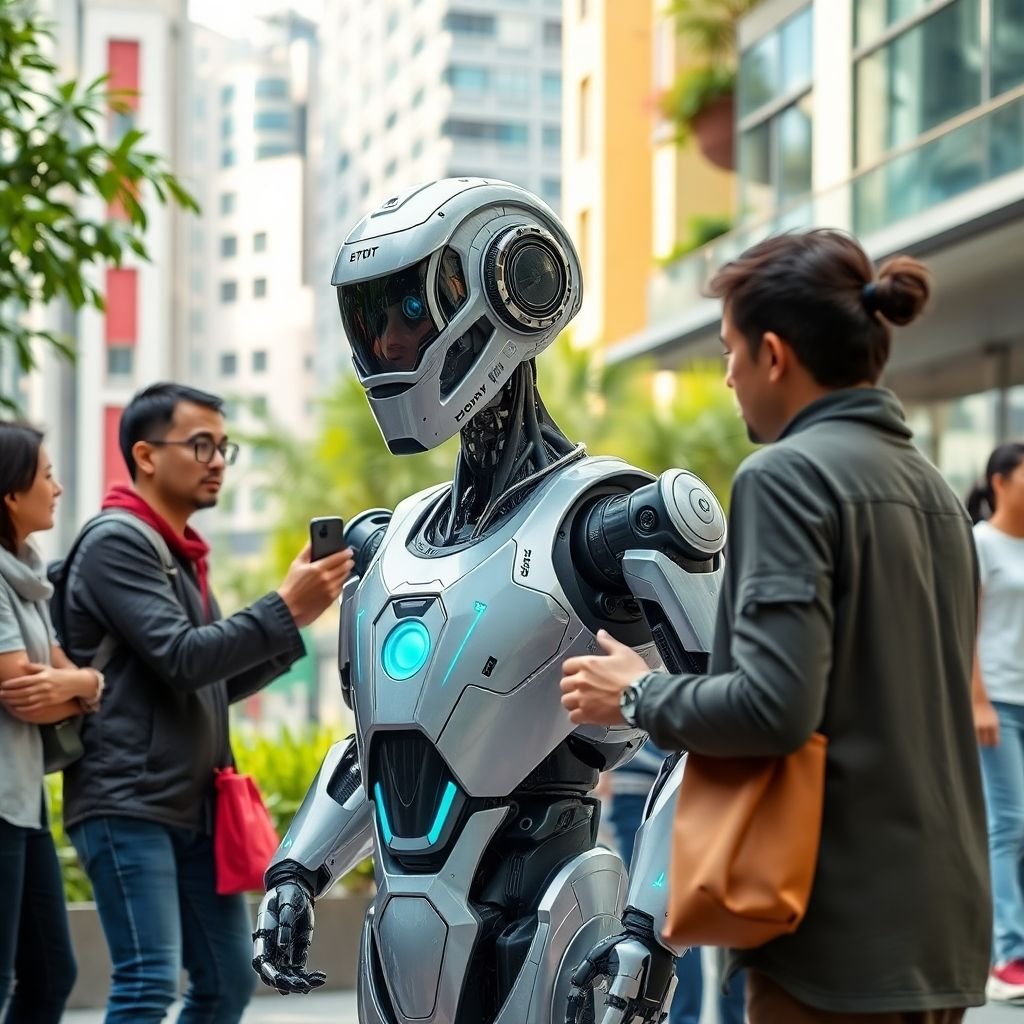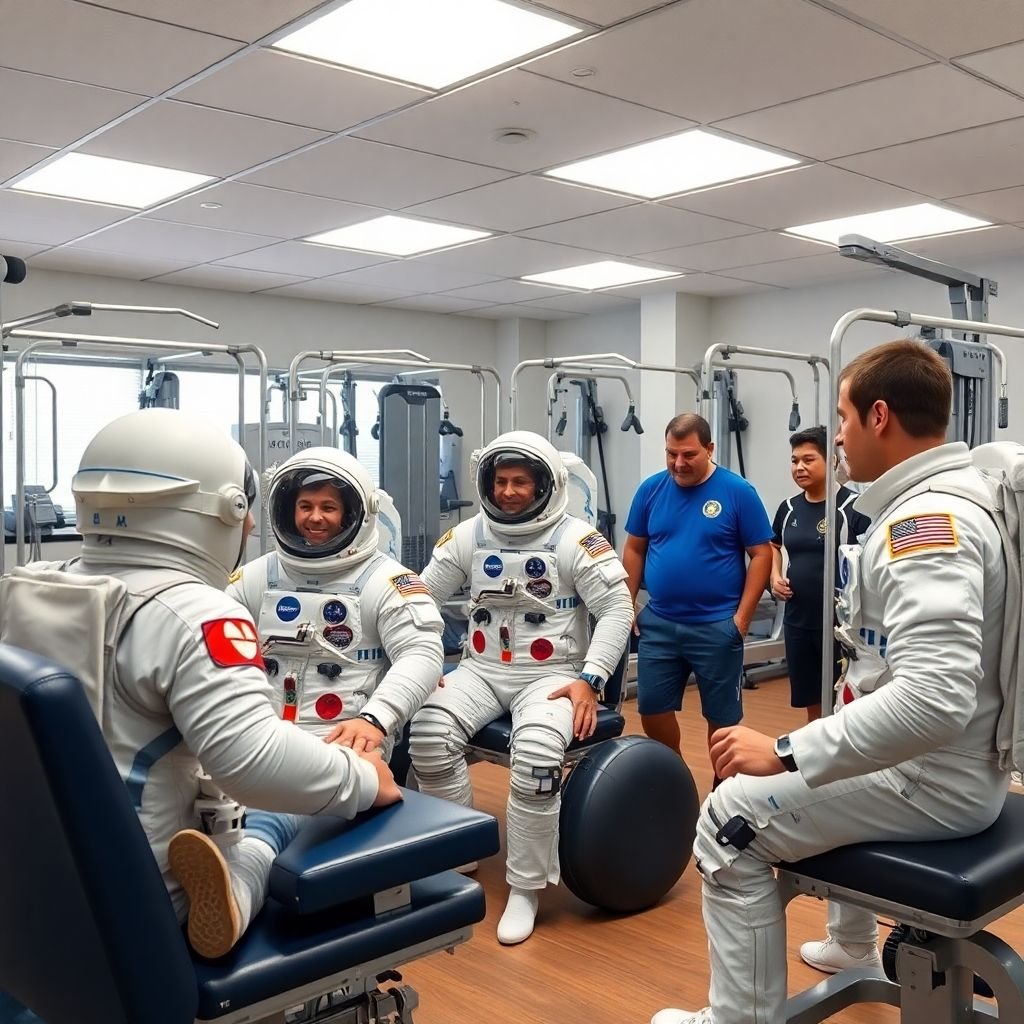As we look ahead, the landscape of robotics is changing rapidly. With advancements in technology, robots are becoming more integrated into our daily lives and workplaces. The future of robotics is not just about machines replacing humans; it’s about collaboration and enhancing our capabilities. This article explores the innovations that are shaping tomorrow’s society and how they impact various sectors, from healthcare to sustainable development.
Key Takeaways
- Robotics is evolving with AI and machine learning, leading to smarter and more autonomous machines.
- Collaborative robots are becoming common in workplaces, assisting humans with tasks and improving efficiency.
- Ethical issues surrounding robotics include privacy, job displacement, and accountability for automated systems.
- Healthcare is seeing significant benefits from robotics, particularly in surgery and rehabilitation.
- Sustainable development is being supported by robotics through energy-efficient designs and smart city applications.
Transformative Technologies in Robotics
Robotics is changing fast, and it’s not just about the big, clunky robots you might imagine. It’s about smarter, more adaptable machines that are finding their way into all sorts of industries. The global market is expected to expand significantly, reflecting a compound annual growth rate (CAGR) of 11.0% market growth.
Artificial Intelligence Integration
AI is making robots way more than just reactive machines. They’re becoming predictive and intelligent, able to learn and adapt without needing someone to constantly tell them what to do. This is a game-changer because it means robots can handle more complex tasks and work in more varied environments. Think about robots that can optimise warehouse layouts or figure out the best routes for picking items – that’s the power of AI at work. This integration of AI is driving innovation across a wide range of applications.
Advancements in Machine Learning
Machine learning is another key area. It allows robots to improve over time as they gather more data. This is especially useful in situations where things are constantly changing, like in logistics or manufacturing.
- Robots can learn to identify defects on a production line more accurately.
- They can optimise their movements to save energy.
- They can even predict when they need maintenance, reducing downtime.
Machine learning is not just about making robots smarter; it’s about making them more efficient and reliable. This is essential for businesses that want to automate their processes and improve their bottom line.
Robotic Process Automation
Robotic Process Automation (RPA) is also becoming more common. RPA involves using software robots to automate repetitive, rule-based tasks. This frees up human workers to focus on more creative and strategic work. RPA is particularly useful in areas like finance, accounting, and customer service. It’s about automating every possible business process, creating a seamless ecosystem where humans, machines, and data work together. Hyper automation promises to take efficiency and productivity to new heights by automating entire workflows rather than individual tasks.
Collaborative Robots and Human Interaction

Robots aren’t just about replacing people anymore; it’s increasingly about how they can work alongside us. This collaboration is changing workplaces and even our homes. It’s a big shift, and it’s happening faster than many people realise.
Enhancing Workplace Efficiency
In factories and warehouses, you’re seeing more autonomous mobile robots (AMRs) doing things like moving materials and helping with assembly. These aren’t the static, pre-programmed robots of the past. They use sensors and data to navigate and adapt. This means humans can focus on more complex tasks that require problem-solving and creativity. It’s about making work easier and more efficient for everyone.
Robots in Daily Life
Robots are slowly making their way into our homes. Think about vacuum cleaners that learn your floor plan or robots that can help with gardening. These aren’t just gadgets; they’re tools that can free up our time and make our lives a bit easier. Some robots are even being developed to provide companionship or assistance to the elderly. It’s a bit like having an extra pair of hands, or a helpful friend, around the house.
Training for Human-Robot Collaboration
As robots become more common, we need to think about how people will learn to work with them. It’s not just about teaching people how to operate robots; it’s about teaching them how to collaborate effectively. This might involve new training programmes, new job roles, and a shift in how we think about work. The goal is to create a workforce that can adapt to a world where humans and robots work together seamlessly.
The rise of collaborative robots means we need to rethink education and training. People will need skills like critical thinking, communication, and adaptability to thrive in a robot-integrated world. It’s about preparing for a future where humans and robots complement each other’s abilities.
Here’s a simple look at how roles might shift:
| Task | Current Approach | Future with Collaborative Robots | Benefits |
|---|---|---|---|
| Heavy Lifting | Manual Labour | Robot Assistance | Reduced strain, fewer injuries |
| Data Entry | Human Input | Automated Systems | Faster processing, fewer errors |
| Inspection | Visual Checks | Robot-Assisted Inspection | More thorough, consistent quality control |
Ethical Considerations in Robotics

Robotics is advancing at an incredible pace, and it’s not just about the cool tech. We need to think about the ethical implications ethics in robotics of these machines becoming more integrated into our lives. It’s about making sure we’re building a future where robots benefit everyone, not just a select few.
Privacy and Data Security
Robots, especially those in our homes or workplaces, collect a lot of data. Think about it: sensors, cameras, microphones – they’re constantly gathering information. We need to be really careful about how this data is stored, used, and who has access to it. It’s not just about preventing hacking; it’s about ensuring that our privacy is respected and that this data isn’t used in ways we don’t agree with.
- Data encryption methods
- Strict access controls
- Transparent data usage policies
Job Displacement and Reskilling
One of the biggest worries is that robots will take over jobs, leaving people unemployed. It’s a valid concern, especially in manufacturing and other industries where automation is becoming more common. However, it’s not all doom and gloom.
We need to focus on reskilling and retraining workers so they can adapt to the changing job market. This means investing in education and training programmes that equip people with the skills they need to work alongside robots or in new roles that emerge as a result of automation.
Accountability in Automated Systems
What happens when a robot makes a mistake? Who’s responsible? If a self-driving car causes an accident, who’s to blame? These are tough questions that we need to answer. We need to establish clear lines of accountability for automated systems. This means developing regulations and legal frameworks that address these issues. It also means designing robots with safety and ethical considerations in mind from the start.
- Clear regulatory frameworks
- Robust testing and validation procedures
- Ethical design principles
Robotics in Healthcare and Medicine

Robotics is making big changes in healthcare. It’s not just about fancy machines; it’s about making things better for patients and healthcare workers alike. From assisting in surgeries to providing remote care, robots are becoming increasingly important in modern medicine. The integration of robotics promises to reshape how we approach treatment, recovery, and overall patient well-being. It’s an exciting time, but it also brings up important questions about how we use this technology responsibly.
Surgical Assistance Robots
Surgical robots are becoming more common. These machines allow surgeons to perform complex procedures with greater precision, flexibility, and control than is possible with conventional techniques. Robotic surgery often results in smaller incisions, reduced pain, and faster recovery times for patients. Think about it: less time in hospital, less discomfort, and a quicker return to normal life. It’s a win-win.
Telepresence and Remote Care
Telepresence robots are changing how healthcare is delivered, especially to those in remote areas or with limited mobility. These robots allow doctors to interact with patients from a distance, providing consultations, monitoring vital signs, and even assisting with basic examinations. It’s like having a doctor in the room, even when they’re miles away. This is particularly useful for elderly patients or those living in rural communities where access to specialist care is limited. healthcare robots are really useful.
Rehabilitation Robotics
Robotics is also playing a key role in rehabilitation. Robots can assist patients recovering from strokes, spinal cord injuries, or other conditions that affect their mobility. These devices can help patients regain strength, coordination, and independence. The use of robotics in rehabilitation is still relatively new, but the results so far are promising.
Robotic rehabilitation offers personalised therapy programmes tailored to individual patient needs. These programmes can be adjusted in real-time based on patient progress, ensuring that therapy is always challenging but achievable. This level of customisation is difficult to achieve with traditional rehabilitation methods.
Here’s a quick look at some of the benefits:
- Improved motor function
- Increased independence
- Reduced recovery time
The Role of Robotics in Sustainable Development
Robotics is playing an increasingly important role in creating a more sustainable future. From reducing waste to improving energy efficiency, robots are being used in a variety of ways to help protect the environment and promote responsible resource management. The integration of robotics into sustainable practises is not just a technological advancement; it’s a necessary step towards a greener future.
Reducing Environmental Impact
Robots are being deployed to tackle environmental challenges in several ways. For example, they can be used for precision agriculture, reducing the need for pesticides and fertilisers. They can also be used for waste management, sorting and recycling materials more efficiently than humans. Robotic automation in manufacturing can minimise waste by optimising material use and reducing errors. Here are some examples:
- Precision agriculture robots reduce chemical usage by up to 60%.
- Robotic recycling systems can sort materials with up to 95% accuracy.
- Automated manufacturing processes can decrease material waste by 20%.
Smart Cities and Urban Planning
Robotics is also contributing to the development of smart cities. Autonomous vehicles can reduce traffic congestion and decrease the need for parking spaces, leading to more efficient land use. Robots can also be used for infrastructure maintenance, such as inspecting bridges and roads, ensuring their safety and longevity. Furthermore, robots can monitor air and water quality, providing valuable data for urban planners to make informed decisions.
The use of robotics in urban planning is not just about efficiency; it’s about creating more liveable and sustainable cities for future generations. By automating tasks and collecting data, robots can help us make better decisions about how we design and manage our urban environments.
Energy Efficiency in Robotics
As robotics becomes more widespread, it’s important to ensure that robots themselves are energy efficient. Researchers are working on developing robots that use less energy and can be powered by renewable sources. This includes using lightweight materials, optimising motor design, and developing more efficient algorithms. The goal is to create a new generation of robots that are not only effective but also environmentally friendly. Here are some ways to improve energy efficiency:
- Using lightweight materials to reduce energy consumption.
- Optimising motor design for greater efficiency.
- Developing algorithms that minimise energy use.
Future Applications of Robotics
Robotics is moving beyond factories and warehouses; it’s poised to reshape many aspects of our lives. The fusion of AI and robotics is creating possibilities we could only dream of a few years ago. It’s not just about automating tasks, but about creating systems that can learn, adapt, and even collaborate with us in ways we never thought possible.
Autonomous Vehicles
Self-driving cars are probably the most visible example of robotics moving into the mainstream. The promise of safer, more efficient transport is a huge driver of innovation in this area. It’s not just cars, though; we’re talking about lorries, buses, and even delivery drones. The challenges are significant – navigating complex urban environments, dealing with unpredictable human behaviour, and ensuring safety are all major hurdles. But the potential benefits – reduced accidents, less congestion, and increased mobility for those who can’t drive – are too big to ignore. The advancements in autonomous applications are really exciting.
Robots in Agriculture
Agriculture is another area ripe for robotic disruption. Imagine fields tended by robots that can plant seeds, water crops, and harvest produce with incredible precision. This could lead to:
- Reduced water consumption
- Less reliance on pesticides
- Increased yields
Robots can also monitor crop health, identify diseases early on, and even target weeds with pinpoint accuracy. This isn’t just about making farming more efficient; it’s about making it more sustainable.
The use of robotics in agriculture could revolutionise food production, making it more efficient, sustainable, and resilient to climate change. It’s about feeding a growing population while minimising our impact on the planet.
Space Exploration and Robotics
Space exploration is inherently dangerous and expensive, making it a perfect application for robotics. Robots can go where humans can’t, enduring extreme conditions and performing tasks that would be too risky for astronauts. We’ve already seen this with rovers on Mars and probes exploring distant planets. But the future holds even more exciting possibilities. Think about:
- Robots building habitats on the Moon or Mars
- Robots mining asteroids for resources
- Robots maintaining and repairing satellites in orbit
These are ambitious goals, but they’re within reach thanks to advances in robotics and AI. The potential rewards are enormous, from expanding our understanding of the universe to unlocking new sources of energy and materials.
Challenges Facing the Robotics Industry

Regulatory Hurdles
Navigating the legal landscape for robotics can feel like wading through treacle. There’s a real lack of clear, consistent regulations, and this uncertainty can seriously slow down innovation. Companies often struggle to understand what’s allowed and what isn’t, especially when dealing with things like autonomous systems and data privacy. It’s a bit of a Wild West situation at the moment, and that makes it hard for businesses to plan and invest.
Public Perception and Acceptance
Getting the public on board with robots isn’t always easy. You see a lot of scepticism and even fear, often fuelled by sci-fi films and worries about robots taking over. People are concerned about safety, privacy, and the impact on jobs. Overcoming these concerns requires open communication, education, and demonstrating the real benefits of robotics in a clear and understandable way. It’s about building trust and showing that robots are there to help, not to replace us.
Technological Limitations
Despite all the progress, there are still some pretty big technical hurdles to overcome.
- Robots still struggle with complex tasks that require human-like dexterity and problem-solving skills.
- Battery life remains a major limitation, especially for mobile robots.
- Making robots truly adaptable to unpredictable environments is a huge challenge.
The reliability and cost-effectiveness of robotic systems also need to improve before they can be widely adopted across various industries. It’s about making them robust, affordable, and easy to use, so they can deliver real value in the real world.
Looking Ahead: A New Era with Robotics
As we wrap up, it’s clear that robotics is set to change our lives in ways we can only begin to imagine. The advancements we’ve discussed show that robots will not just be tools but partners in our daily tasks. They’ll help us in work, at home, and even in healthcare. Sure, there are challenges to tackle, like job displacement and ethical concerns, but with the right approach, we can make sure everyone benefits from these innovations. The future looks bright, and as robots become more integrated into our society, we’ll likely see a world where humans and machines work hand in hand, making life easier and more efficient for all.
Frequently Asked Questions
What are the main benefits of robots in the workplace?
Robots can help make work easier by doing repetitive tasks, allowing humans to focus on more creative and important jobs.
How do robots use artificial intelligence?
Robots use artificial intelligence to learn from their surroundings, make decisions, and adapt to new situations without needing constant human help.
Will robots take away jobs from people?
While robots may replace some jobs, they can also create new opportunities. Many workers will need to learn new skills to work alongside robots.
What are some examples of robots in healthcare?
In healthcare, robots assist doctors during surgeries, help with patient care from a distance, and support rehabilitation for patients recovering from injuries.
How can robots help the environment?
Robots can reduce waste and energy use, help build smart cities, and contribute to sustainable practises by optimising resources.
What challenges do we face with robotics in society?
Challenges include making sure robots are safe, addressing public concerns about job loss, and ensuring that technology is used ethically.









